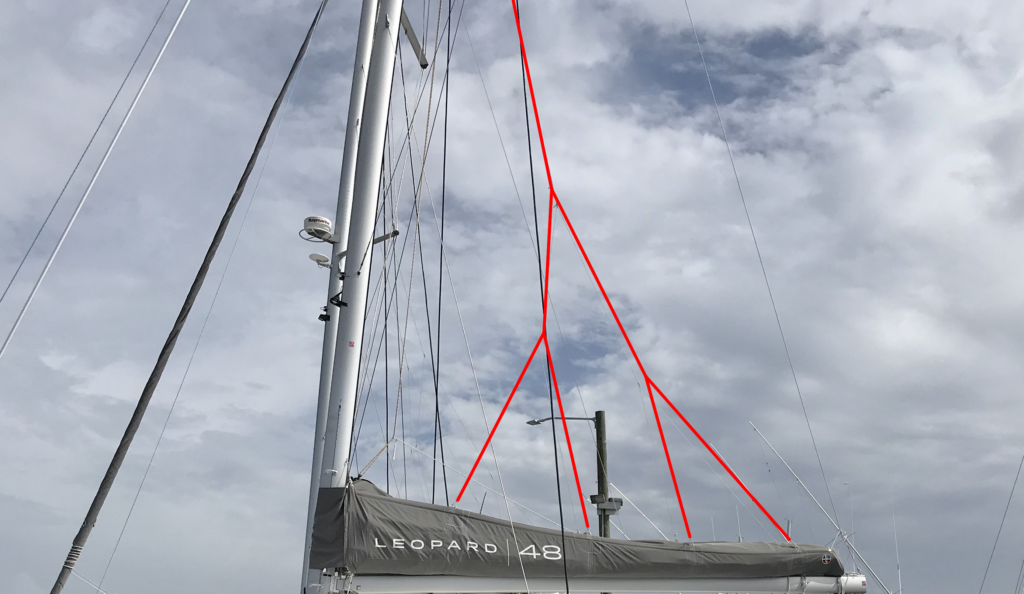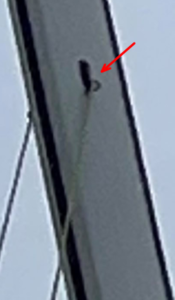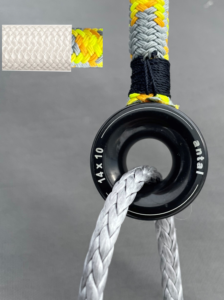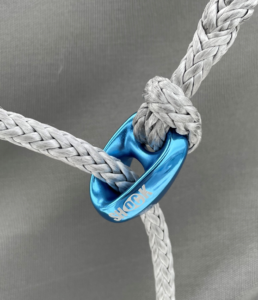
Lazy jacks are a system of lines on each side of the boom that are rigged to a point high on the mast and down through a series of points until attached along the length of the boom. Their primary purpose is to contain and guide the main sail, particularly as it is being lowered. Because our boat stores the main sail in a canvas sail bag, the lazy jacks also serve to hold up the sail bag sides and provide a proper container into which the sail will fold.
Once upon a dark stormy night, this became a story. I, captain and crew (Brenda was in Boise on family emergency) had been beating into 25 knot headwinds for the past 24+ hours as we motor-sailed north nearing Cape Hatteras. At 5:00 am, I was on watch. Boom! What the hell was that!? Soon, I realized lines and sail were all over the deck in front of the helm. We were single reefed and both the Reef 1 line and the leeward lazy jacks on starboard had blown. The sail was billowing out because the reefing was gone, and the side of the bag was hanging down, with all of the extra reefed sail that had been in the bag now on the deck. I could see the long lazy jack lines were streaming overboard, right near the running propeller. Uggg. I pulled in all the lines and, seeing there was no imminent danger, waited until sunrise to deal with the sail when we could see and others were awake. We made it to Cape Charles in the Chesapeake the following night just fine, but this is something I never want to repeat. So…

In my opinion, the factory design had too many chafe points. The lower connection points were via the lower line running through a loop in the upper line, forming a sliding rope-on-rope connection. The polyester lines that rub against the mainsail were terminated by sharp melted tips. And I found that on the starboard side of our new mast, the eye bolt through which the upper line ran was offset and permanently rubbed fairly hard against the line. This is where the lazy jack line chaffed through and broke.
Recalling an elegant lazy jack design by Troy @ Free Range Sailing, I set out to over-engineer the heck out of our new system.

For the primary lazy jack line that runs up through the mast, I chose 8mm Samson MLX3, a hybrid line with Dyneema-similar core and polyester sleeve. Instead of a knot, it connects to the lazy jack system via an Antal low-friction ring. At the mast sheeve and eye bolt where it rubs, I added a 5′ section of NER Dyneema Chafe Sleeve.

For the network of lines along the sail, I chose straight Dyneema (5mm Samson AmSteel). It’s soft and slides smoothly, but is incredibly strong. These are connected via Ronstan Shocks and splicing – no more chafe points or sharp edges.
And finally the lazy jack lines are connected to the sail bag via a combination of eye splice on one end and soft shackle on the other so that they are removable.
I did say over-engineer the heck out of it! It looks great and I’m very pleased with the result. It would not have been possible without Brenda’s superior splicing skills. She cranks out soft shackles like they’re trivial now.

